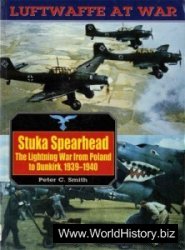Onetime Oakland, California-based supplemental Trans-International Airlines, a division of the Transamerica Corporation, changes its name to Transamerica Airlines on October 1, 1979. The workforce totals 2,583 and the fleet comprises 3 Douglas DC-10-30CFs, 12 DC-8-61/63s, 12 Lockheed L-100-30 Hercules, and 8 L-188AFs. Orders remain outstanding for 3 Jumbojets.
On November 18, an L-188CF with 3 crew is en route from Ogden-Hill AFB to Nellis AFB, carrying a cargo that includes 15 pounds of explosive devices and a minute quantity of thorium, a low-level radioactive material. The aircraft loses electrical power 3 km. from Granger, Utah, a sparsely populated community near Salt Lake City. During the subsequent loss of control, the turboprop spirals toward earth, causing it to exceed its design limits; it breaks up in flight and there are no survivors.
The first B-747-271C is delivered on December 21 and, later in the month, Jumbojet flights are launched and scheduled operations are begun.
Combined enplanements for the carrier under its 2 names total
891,000, an increase of 2.8%. Cargo traffic is down by 10.3% to 377.32 million FTKs.
Under the CAB’s revised airline classification scheme, Transamerica is now rated as a “national” carrier in 1980 and by the end of the year, it has achieved a third record year of earnings, despite a traffic drop, higher fuel prices, and the U. S. recession. Describing itself as a “department store of air transportation services,” the Oakland-based carrier provides military flights, passenger and cargo charters (including its noted animal shipments), and scheduled service.
Transamerica is now the largest passenger charter operator flying across either the Atlantic or the Pacific. Nonstop scheduled Boeing 747-271C service is inaugurated between Los Angeles and Shannon, Ireland, following delivery of the second Jumbojet on March 26.
The fleet now comprises 2 Jumbojets, 6 DC-8-63CFs, 2 DC-8-61s, 3 DC-8-61Fs, 3 DC-10-30CFs, 8 Lockheed L-188AF/CFs, and 12 L-100-30 Hercules freighters.
Passenger boardings remain level at 929,483, and freight traffic drops off by 12%. Revenues accelerate 29.1% to $352 million and net profit skyrockets 130% to $23 million. This is the 20th profitable year out of the past 21.
The employee population is reduced by 13.6% in 1981 to 1,900. Although business falls somewhat, the multipurpose carrier continues to record important firsts. Long known as a premier shipper of animals, Transamerica begins an agricultural development division to consult on and coordinate projects worldwide, winning an initial contract in the People’s Republic of China. Meanwhile, twice-weekly B-747-271C charters are launched between Houston and the Persian Gulf.
Three of the company’s Douglas DC-10-30s are leased to Air Florida, and a new Jumbojet combi, the company’s third, is acquired on June 1. In July, seven of its DC-8-63Fs begin conversion with CFM56 engines to DC-8-73s with GE/SNECMA CFM-56 engines.
Passenger enplanements decline 12.2% to 816,000, but freight traffic increases sharply. By operating 357.7 million FTKs, Transamerica proves itself the largest national in that category. Total revenues earned fall off 8.3% to $319 million, but net profit rises to $24.7 million atop an operating gain of $24 million.
Transamerica continues its extensive and diversified military and civilian operations in 1982, with an employee population that is reduced 15.8% to 1,600. Nonstop scheduled passenger service from Oakland and Chicago to Shannon is added to the existing Los Angeles to New York route with the first new DC-8-73 on June 2, while a new schedule, under contract to the travel package firm American Hawaii Cruises, is added from St. Louis and Dallas to Honolulu and Tahiti.
The fleet by year’s end includes 3 B-747-271Cs, 3 DC-10-30s, 12 DC-8s, 12 Lockheed L-100 Hercules, and 8 L-188A Electras.
Freight traffic jumps 10.3% to 394.44 million FTKs, but passenger bookings decline 37.3% to 512,000. Revenues accelerate 24.96% to $239.5 million while expenses decline 27.74% to $213.21 million. An operating profit of $23.6 million is posted, along with net income of $23.55 million.
One hundred employees are laid off in 1983 as scheduled service is inaugurated from Los Angeles and San Francisco to Shannon and Paris.
Having repossessed them from bankrupt Air Florida, the company’s three DC-10-30s are sold to rapidly expanding Federal Express. An L-188AF is sold in June.
An L-100-30 with four crew and three passengers crashes in fog 50 km. S of Dundo, Angola, on August 27; there are no survivors.
Passenger enplanements finally rise, up 12.9% to 576,000, and freight traffic increases 2.2% to 402.96 million FTKs. Revenues advance 3.38% to $247.59 million as costs barely increase, up only 0.59% to $214.47 million. Keeping the latter figure in check allows Transamerica an operating profit of $33.12 million and net gain of $26.65 million.
The employee population rises 3.3% in 1984 to 1,550 and the fleet now includes 13 L-100-30s, 7 L-188AFs, 5 DC-8-61CFs, 7 DC-8-63s, 1 B-747-138, and 3 B-747-271Cs.
The company begins twice-weekly New York City to Tel Aviv Boeing 747-130 service in June, following receipt of a leased Jumbojet once flown by Deutsche Lufthansa, A. G. Flights to Ireland are also stepped up during the summer as are tour flights from Midwestern cities to destinations throughout Europe.
While conducting joint charter operations with LOT Polish Airlines, the carrier becomes the first U. S. air transport firm to land in Warsaw since 1981. On August 22, the company receives a $31.9-million USAF contract for Pentagon transportation services. The reengining of its seven DC-8-63s into DC-8-73s is completed, the B-747-130 is subleased for freight operations, and the seven L-188AF Electras and five DC-8-61CFs are leased to other airlines.
Branching out somewhat, Transamerica attempts to form a nonunion subsidiary under its old name, Trans-International Airways, a move that leads to increased labor tensions and a breakdown in discussions with pilots in November.
An L-100-30 is destroyed on the ground at Cafunfo, Angola, by rebel gunfire on December 29.
Passenger traffic rises 35.6% to 781,000 and freight traffic jumps 14.9% to 462.82 million FTKs. Revenues rise 21.6% to $331.3 million while costs are suspended at $293.2 million. The operating profit balloons to $38.1 million. Net profit is again reported with that of Transamerica Corporation.
The employee population plunges 32.4% in 1985 to 1,048. As the new year dawns, Transamerica continues its successful, if unusual, business mix of low-fare scheduled service over selective routes, military and tour passenger charters, and various charter cargo operations, specializing in outsize or animal loads and unusual destinations. The bitter contract fight with its unions occupies the carrier again this year. Two DC-8-73s join the fleet in February and President Howard K. Howard becomes CEO in May.
Although there is no timetable, the carrier is put up for sale by its parent in the fall and in November, the onetime German Jumbojet is returned to its lessor.
The transatlantic charter business falls off and contributes, along with other company uncertainties, to a decline in passenger traffic of 15.6%, or 659,000. Cargo dips 5% to 439 million FTKs. Revenues are also down, by 5.4%, to $278 million and costs fall 1.4% to $272.5 million. Operating income declines to $5.6 million and a diminished $20.8-million net profit is earned.
The search for a buyer continues during the first three quarters of 1986, but when one does not step forward and carrier is forced to shut its doors on September 30.
Prior to shutdown, a total of 378,000 passengers are flown, a decline of 36% over the previous period a year earlier; freight is down by 43.3% for the same period to 183.48 million FTKs.
Revenues since January plunge 45.8% to $143.86 million and expenses fall 34.4% to $163.85 million. The operating loss is $19.99 million. Sale of assets allows the carrier to close out with a $2.15-million net gain. The most famous example is the transfer, for $86.4 million, of its 11-unit Hercules fleet to Southern Air Transport.




 World History
World History









